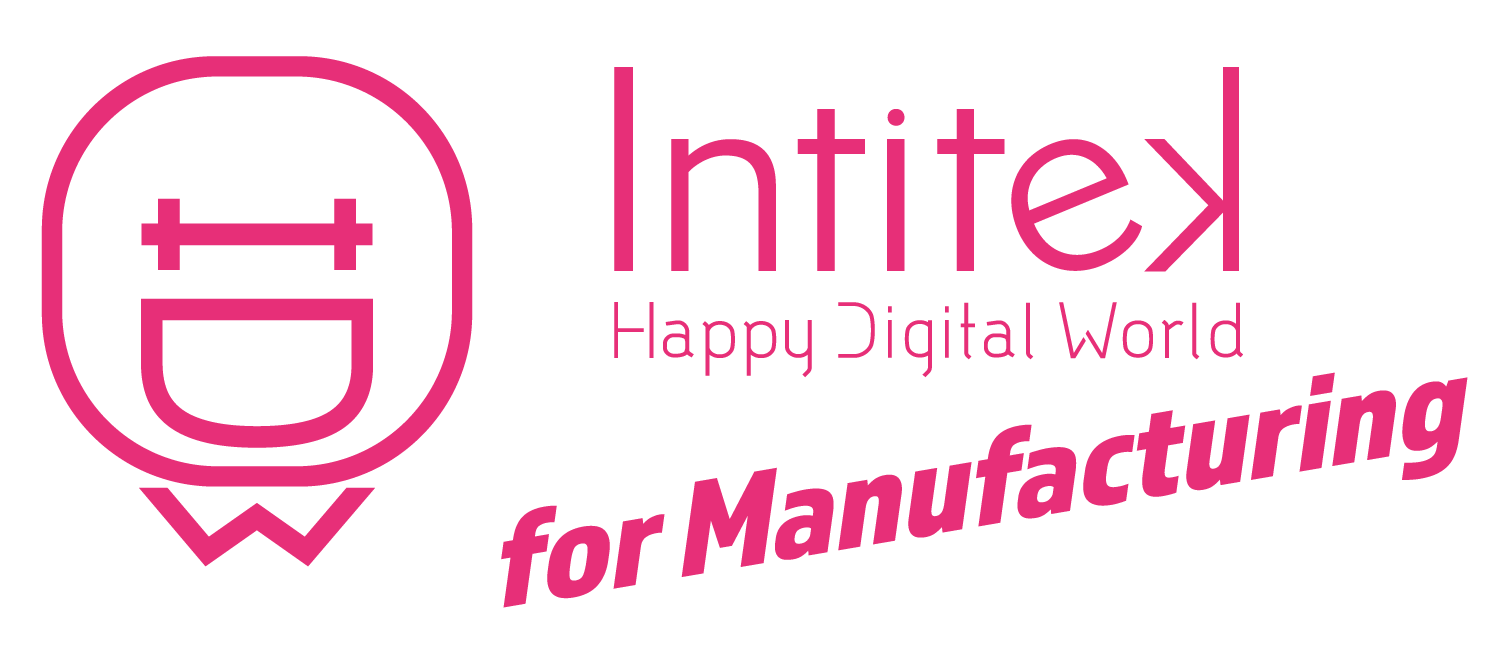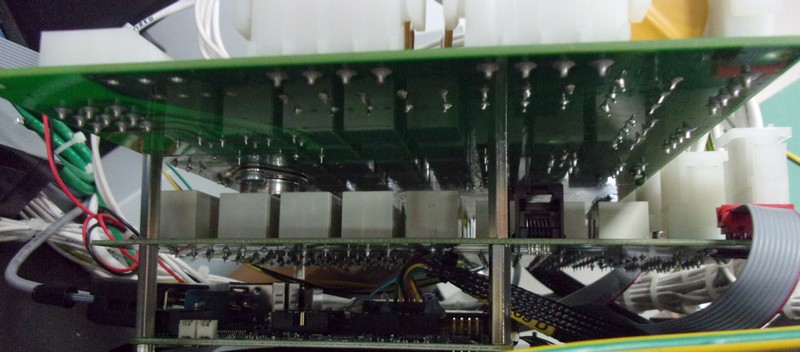TMA Newsletter - July, 2017
Alternator & Starter Testing Equipment
So many innovations for the last 2 months...
TMA team is pleased to keep you informed about the latest news with this newsletter. Take time to take note of these novelties launched in the last 2 months, and learn more about the different regulators protocole communication... Enjoy your reading !
A BRAND-NEW STARTER TESTING MACHINE ON THE MARKET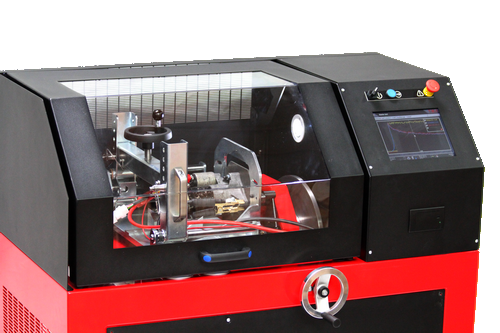
INTITEK-TMA has created the buzz on the market by displaying for the first time a new automated full-load testing machine for starters during REMATEC Show in Amsterdam.
The prototype of this new machine, temporarily called ASP16, impressed all the visitors of TMA booth thanks to its innovative design and its promising flexibility.
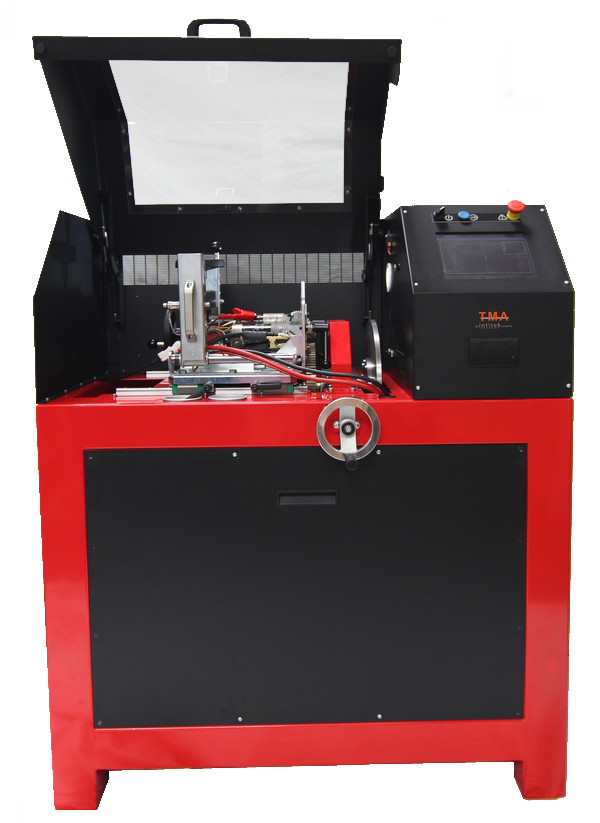 This new machine is planned to be ready for sale in October, and will be exhibited on TMA booth during Equip'Auto Show in Paris from 17th to 21st October 2017.
This new machine is planned to be ready for sale in October, and will be exhibited on TMA booth during Equip'Auto Show in Paris from 17th to 21st October 2017.
The key benefits of this innovative product reside in the universal ways of operation, and in the optimized interchangeability between different starters.
The supply of 12V and 24V for starters is assumed by a custom-made internal 30kW power supply developped by INTITEK-TMA engineers, and this exclusive solution allow to test continuously starters in large series.
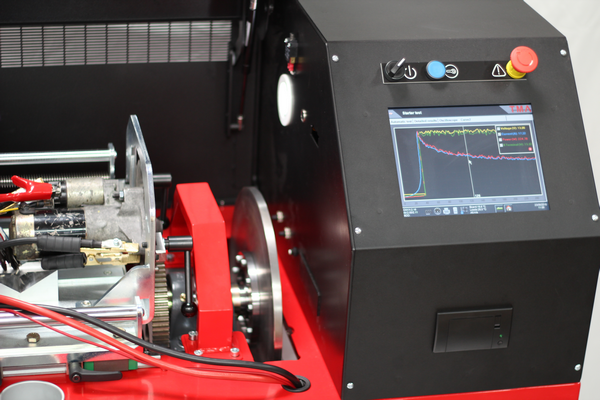 This starter test bench has been designed to test units up to 9 kW within a full load operating mode thanks to an electrical braking system.
This starter test bench has been designed to test units up to 9 kW within a full load operating mode thanks to an electrical braking system.
Such as its little brothers ONYX and TITANE, the ASP16 is totally computerized and will allow users to print and save online test reports with performance curves.
The long-awaited automated testing solution for starters is now coming... be ready for it !
ALTERNATOR REGULATION : What are the different communication protocols on the market ?
 Franck, INTITEK-TMA Electronic Engineer, explains the main differences between the modern solutions for alternator regulation :
Franck, INTITEK-TMA Electronic Engineer, explains the main differences between the modern solutions for alternator regulation :
An alternator is an electrical system which provides power to the different embedded systems of the vehicle and also charge the battery. In order to assume this role, the voltage of the alternator must be constantly higher than the battery voltage, that is the simplistic summary of the regulation principle.
In the earlier technologies of alternators, the regulation was done by an integrated (or external) regulator which was linked directly to the battery voltage. Nowadays, the regulation is driven by the onboard computer (CPU) which gather information from all over the vehicle and optimize the commands.
In the present automotive industry, there is an important variety of communication protocol technologies. These protocols send “messages” to the alternator to drive the regulation voltage.
It is possible to group them into 3 families:
+ “Simple” protocols
+ “Advanced” protocols
+ “Smart” protocols
1 - “Simple” protocols
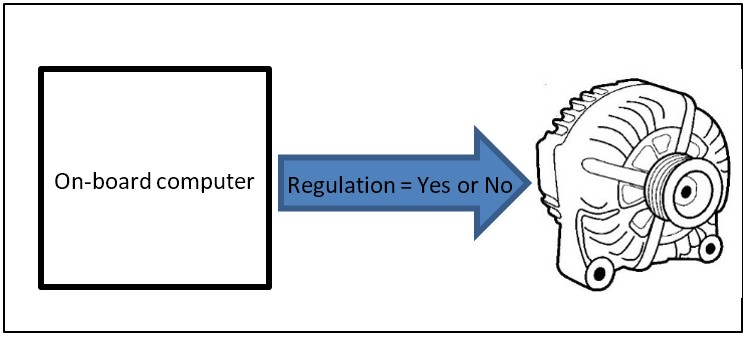 This family only has « C-Term » protocol from Toyota and Honda.
This family only has « C-Term » protocol from Toyota and Honda.
The alternator regulates at aroung 14V. When « C » terminal is grounded, the regulation voltage drops to 12,8V.
This functionality is used when the engine of the vehicle needs more power. By lowering the regulation voltage, mechanical load is reduced and engine is released.
This protocol is « simple » since we can only choose between two regulation voltages: 12,8V or 14V.
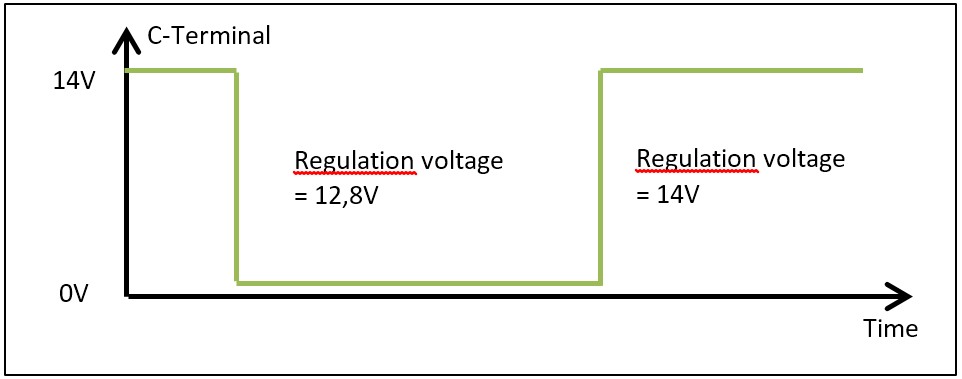
Signal Waveform
2 - “Advanced” protocols
This family contains the majority of the protocols found on modern alternators.
Among them we can list :
+ PCM on European Ford and Land Rover vehicles
+ RVC on GM vehicles
+ RLO on Toyota vehicles
+ P&D on Mazda, Kia or Mitsubishi vehicles
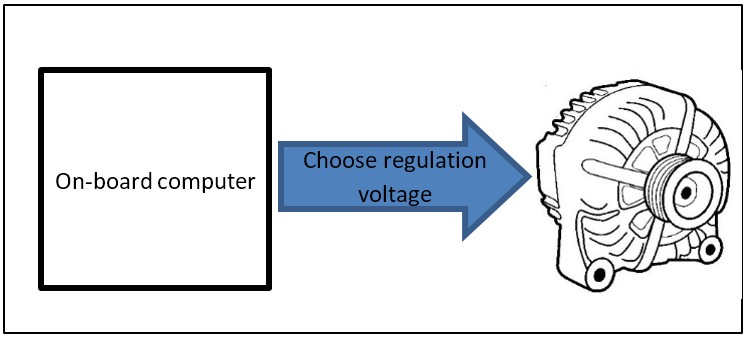 In that case, we talk about “advanced” protocols because regulation voltage is totally controlled and set by the CPU.
In that case, we talk about “advanced” protocols because regulation voltage is totally controlled and set by the CPU.
These protocols use a PWM type encoding (Pulse Width Modulation). The pulse width of the signal sent by the on board computer to the alternator determines the regulation voltage provided.
Example:
PCM says that for 55% pulse width, regulation voltage is 14,2V.
Pulse width is called duty cycle. It corresponds to the percentage of duration of the signal’s high state regarding the period (see following image)
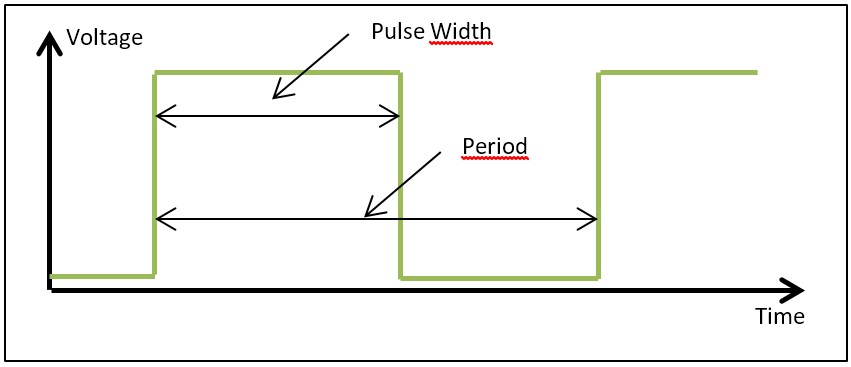
Signal waveform (pulse width = 55%)
The protocols of this family differ by:
+ Their signal frequency
+ Their signal voltage amplitude
+ Their transformation ratio
3 - “Smart” protocols
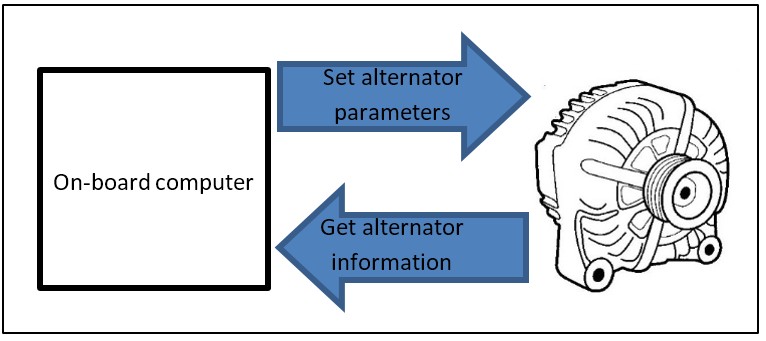 The last family, the most complex and also the most advanced protocol, is composed of LIN and BSS protocols with their derivatives: Lin1, Lin2, Lin3, BSS1, BSS2…
The last family, the most complex and also the most advanced protocol, is composed of LIN and BSS protocols with their derivatives: Lin1, Lin2, Lin3, BSS1, BSS2…
These protocols are said to be “smart” because they control and set more than the regulation voltage. For example, the Lin allows setting response time, default modes…
The communication between the CPU and the alternator is a two-ways flow. the alternator is able to answer CPU's question, and these responses are messages containing different information like breakdowns, temperatures, voltage regulation…
Protocols of this family differ by :
+ Their communication speed
+ Their encoding method
+ Their signal voltage amplitude

Lin frame example
CONCLUSION :
The complexity and diversity of the different communication technologies for alternators regulation make the tests very complicated without modern tools. If the protocol for regulation is not the correct one, the alternator won't regulate properly, and sometime won't load at all (especially with LIN protocols).
TMA has designed a range of testing machines, ONYX and TITANE, which are able to recognized automatically which protocole the regulator is using (between simple, advanced and smart protocols). These automated testers can simulate the communication between the CPU and the alternator, and proceed to a complete analysis. The protocol recognition step consists in checking one by one the different communication protocols existing on the market, until the alternator regulates properly.
Upgrade kits 2.0 now available for ONYX and TITANE 1.0
As promised, INTITEK TMA team has just introduced to its existing customers the new UPGRADE KIT 2.0 developed for ONYX and TITANE.
TMA clients can already update for free their software every 2 or 3 months thanks to continuous efforts from TMA engineering team. In addition of these regular updates, TMA has developed a hardware “kit 2.0” allowing to upgrade from the classic version to the new “2.0” version (2017). All customers can now fully enjoy of the significant developments made on the test benches without having to buy a new bench !
Upgrade Kit 2.0 includes:
+ A new multiplexed electronic card for no limit connexion solutions
+ New industrial grade connexion cables (including RLO, PD)
+ A new built-in innovative solution allowing the test of alternators with external regulators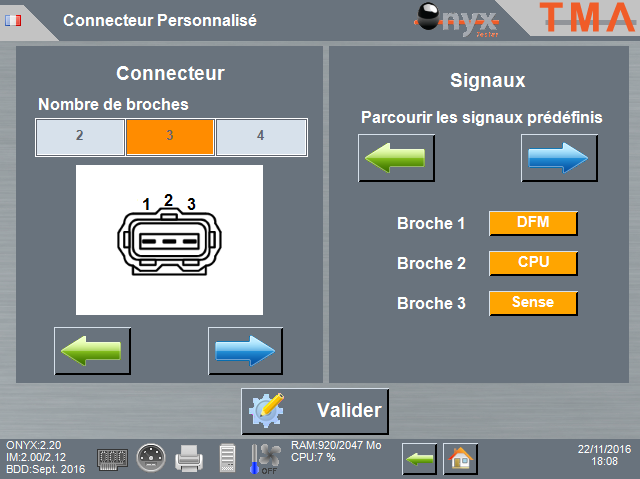 + A software enriched with a lot of new functions (search by plug, configuration of the test, results storage, personalization of test results, help for interpretation of results...)
+ A software enriched with a lot of new functions (search by plug, configuration of the test, results storage, personalization of test results, help for interpretation of results...)
“We are happy to prove to all our customers that each testing bench is developed following an upgradable software AND hardware conception. It is very important for us to keep all our benches over the world at the cutting edge of the technology” Guillaume ROSSI, Sales Manager at TMA.
For any further information, please contact your sales manager, or contact us by email on This email address is being protected from spambots. You need JavaScript enabled to view it.
A bright future in the Global Reman Industry for TMA testing equipment
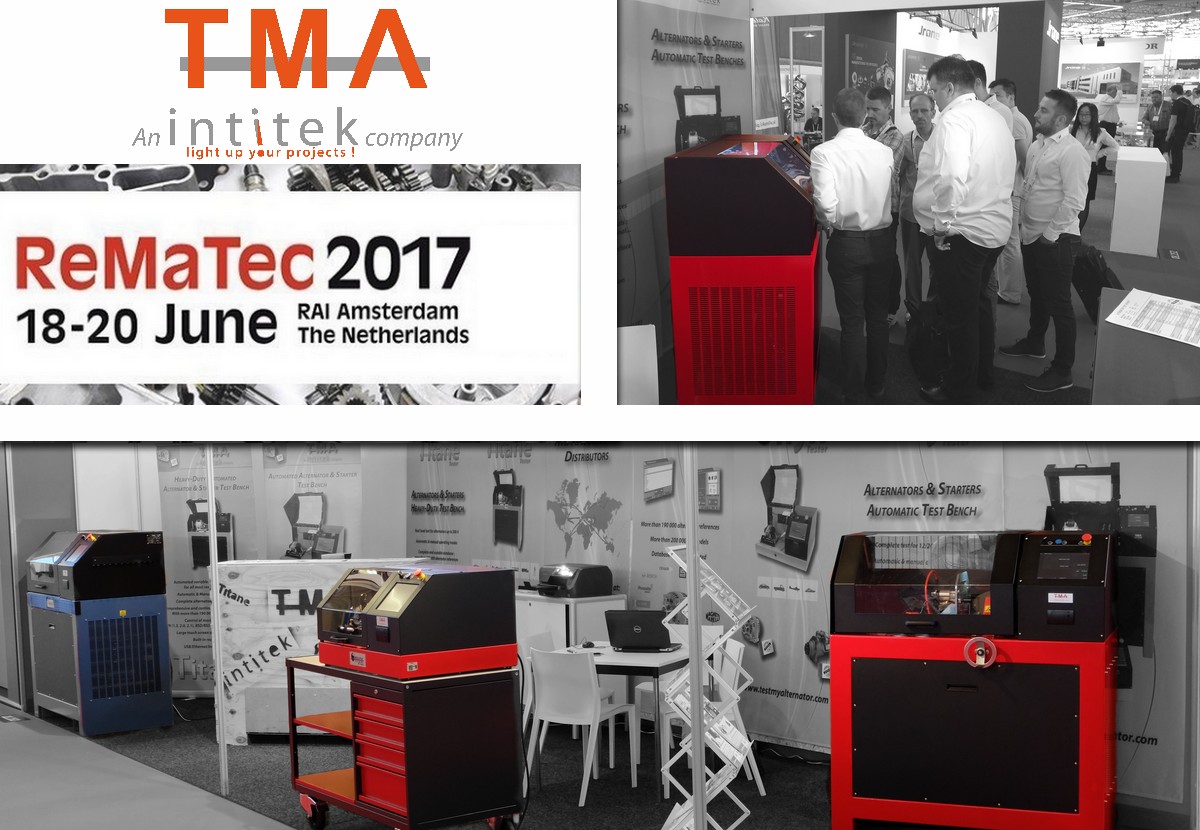 The last edition of REMATEC show took place in Amsterdam in June 2017. It was the opportunity for INTITEK-TMA to exhibit its new products to the main players of the worldwide Remanufacturing Industry.
The last edition of REMATEC show took place in Amsterdam in June 2017. It was the opportunity for INTITEK-TMA to exhibit its new products to the main players of the worldwide Remanufacturing Industry.
The prototype of TMA new Starter Testing Machine, temporarily called ASP16, has been the star of this 3 days exhibition. Ready before the end of 2017, this new machine is going to be the long-awaited automated testing solution for starters with full load system.
Version 2.0 of ONYX Tester and TITANE Tester has been truly appreciated by the market, with useful innovations embedded. Interesting contracts have been signed for these machines, especially in Asian region.
 Special SUMMER OFFER : Buy 1 TITANE and get a Macbook Pro for FREE !
Special SUMMER OFFER : Buy 1 TITANE and get a Macbook Pro for FREE !
For any order of 1 TITANE confirmed and paid throughtout July and August 2017, you will receive for free in September 2017 a Macbook Pro 13", valued at 2.000€.
For any order or details, please contact us at This email address is being protected from spambots. You need JavaScript enabled to view it.
 Special SUMMER OFFER : Buy 1 ONYX and get its mobile workshop trolley for FREE !
Special SUMMER OFFER : Buy 1 ONYX and get its mobile workshop trolley for FREE !
For any order of 1 ONYX confirmed and paid throughtout July and August 2017, you will receive for free in September 2017 the special mobile workshop trolley adapted to the ONYX Tester, valued at 500€.
For any order or details, please contact us at This email address is being protected from spambots. You need JavaScript enabled to view it.
http://www.testmyalternator.com/en/news/tma-newsletters/238-tma-newsletter-april-2017.html","data-counter":"right","type":"mce-text/javascript"}" data-mce-type="text/javascript">
lang: en_EN
